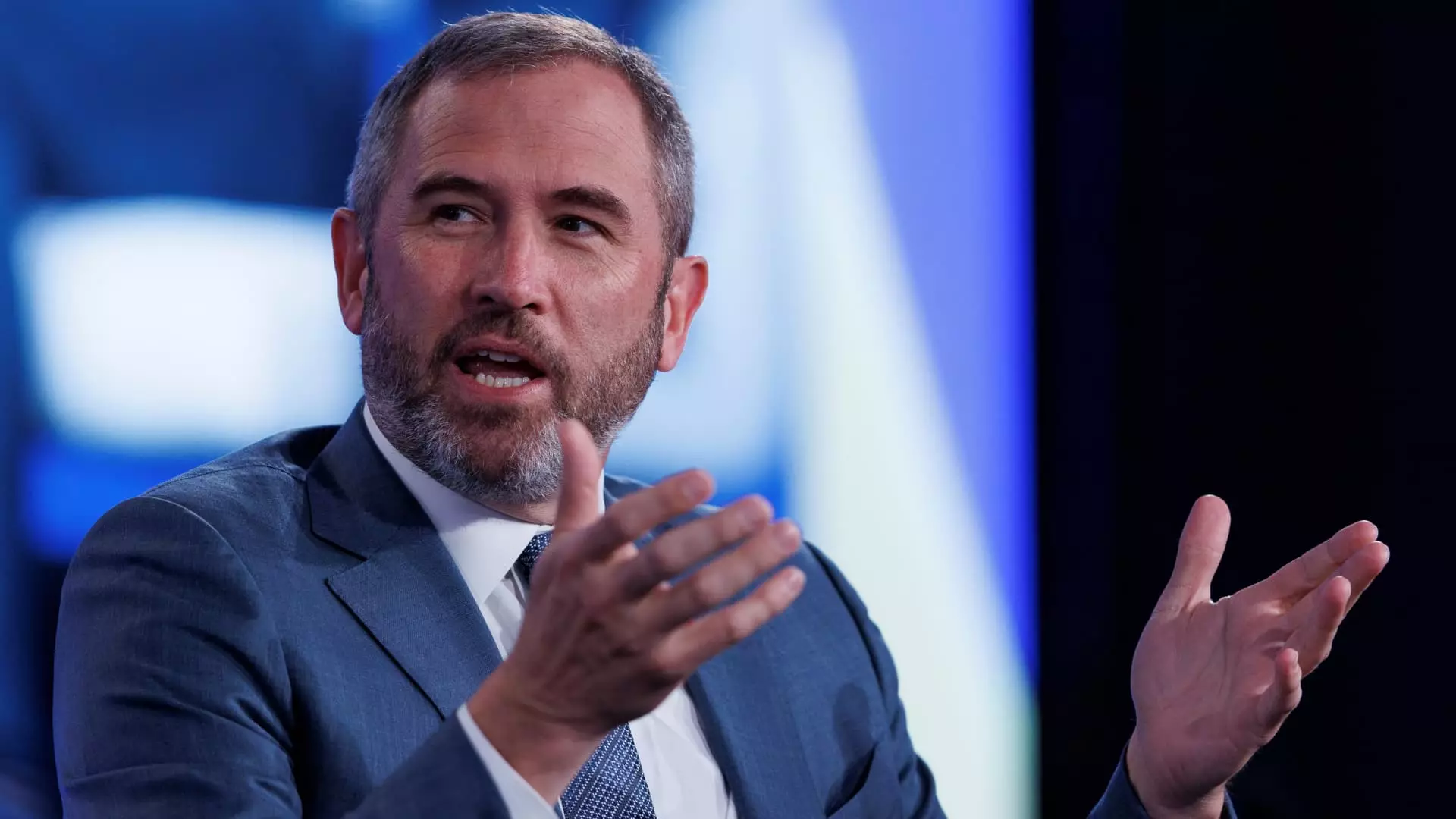In an industry marked by volatility and uncertainty, Brad Garlinghouse, the CEO of Ripple Labs, has recently shared his nuanced views on the future of cryptocurrency regulation in the United States. His thoughts come in the wake of an impending election that many view as pivotal for the crypto landscape. Garlinghouse’s optimism contrasts sharply with his past skepticism regarding the regulatory environment, revealing a complex interplay of political dynamics, legislative priorities, and industry evolution.
As the U.S. gears up for a significant electoral moment, Garlinghouse believes that irrespective of the election’s outcome, there will be a paradigm shift towards a more pro-crypto legislative environment. His statement encapsulates a growing sentiment among industry leaders that a change is necessary for innovation to thrive. “This is the most important election we’ve had,” he stated emphatically during a recent conversation at DC Fintech Week, underlining the gravity of the situation.
This political optimism may be rooted in evident shifts observed in Congress and the broader political climate, where a bipartisan acknowledgment of the potential benefits of cryptocurrency seems to be emerging. Unfortunately, the implications for the crypto sector, once heralded as a uniting force, are now becoming increasingly partisan. As discussions around regulation surface, the predominant fear among crypto advocates is that certain candidates may perpetuate regulatory hostility toward digital assets.
Ripple, a key player in the cryptocurrency market primarily known for its XRP token, serves a predominantly international clientele—about 95% of its operations occur outside the U.S. This international focus reflects the organization’s strategic shift in response to an unfriendly regulatory environment back home, particularly following the SEC’s legal actions against Ripple in 2020. The company’s ongoing efforts to navigate through these challenges could serve as a model for other organizations in the sector.
Garlinghouse noted that the ruling from the previous year, which clarified that XRP is not deemed a security in retail transactions, was a turning point. Such precedents not only benefit Ripple but may also help shape the regulatory framework benefiting the entire industry. However, the ongoing challenges remain pronounced, forcing many in the industry to consider relocating their businesses to more crypto-friendly jurisdictions.
In a notable piece of advice, Garlinghouse urged fintech startups to “incorporate outside the United States,” highlighting the potential benefits nations with less stringent regulations could offer.
Despite a trend toward bipartisan support for crypto innovations, Garlinghouse’s comments reveal an undercurrent of anxiety within the community. He observed that an increasing number of pro-crypto advocates are viewing the political landscape through a partisan lens. This is particularly relevant when comparing the stances of different political figures. The discussions surrounding Vice President Kamala Harris’ nuanced position could indicate a potential shift in how tech issues, particularly crypto, are approached by the Democratic leadership.
Interestingly enough, Garlinghouse’s optimism about a reset in approach regardless of election outcomes contrasts sharply with opinions of pro-crypto constituents. Many within the industry fear that Harris’ administration might perpetuate what Garlinghouse refers to as an “attack” on the sector, in reference to actions taken by entities like the SEC and the Treasury.
Garlinghouse is not shy in expressing his discontent with the current leadership’s strategy towards the crypto ecosystem. His criticisms resonate with numerous advocates within the industry who perceive a series of obstructions that hinder progress. He pointedly summarized the state of affairs: “It has been an attack, and it isn’t just the SEC.” His delineation of “Operation Chokepoint 2.0,” a term denoting the reluctance of banks to engage with crypto entities under the current administration, underscores the critical strain this environment puts on innovation.
Yet, Garlinghouse maintains a hopeful perspective. He believes that what the industry is experiencing now may merely represent a temporary setback in the broader growth trajectory of cryptocurrency. “We can debate the magnitude of that reset, and there’s lots of disagreement about that… We’re going to see forward progress,” he noted, signaling a possible reconciliation of divergent political views leading to constructive legislative developments.
While uncertainty looms over the regulatory environment for cryptocurrency in the U.S., voices like Garlinghouse’s provide valuable insight into a possible path forward. The upcoming election presents an opportunity for a significant reevaluation of crypto policies, potentially ushering in an era of increased innovation and adoption of cryptocurrency across various sectors.

